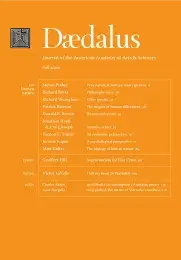The origins of human differences
With increasing frequency the media report the discovery of genes for distinct human characteristics, such as athletic prowess or male promiscuity. Yet it is obvious that experience, education, and culture make a big difference in how people behave, whatever their genetic inheritance. Why is it that behavioral and psychological development are so often explained in terms of the exclusive importance of one set of factors, either genetic or environmental?
Oversimplified opinions may derive from a style of advocacy that is common in many academic debates. If Dr. Jones has overstated her case, then Professor Smith feels bound to redress the balance by overstating the counterargument. The way scientists analyze complex processes further amplifies the confusion. When somebody has conducted a clever experiment demonstrating an important long-term influence on behavior, that person has good reason to feel pleased. It is easy to forget, however, about all those other influences that a competent scientist contrives to keep constant or to play no systematic role.
Even if the debates are seen for what they are–irritating examples of advocacy–is it not the case that complex human behaviors have come from somewhere? In some instances, surely, they will be inborn and in other instances they will be acquired by experience. But the apparent good sense of this view leaves out of account the ways in which the inborn can be changed by experience and the ways in which the gathering of experience is itself inborn. Even so, it is worth looking at some straightforward examples.
Studies of animal behavior do, indeed, tell us that much complex behavior can develop without opportunities for practice. The European garden warblers that have been hand-reared in cages nevertheless become restless and attempt to fly south in the autumn, the time when their wild counterparts migrate in that direction. The warblers continue to be restless in their cages for about a couple of months, the time it would take them to fly from Europe to their species’ wintering grounds in Africa. A similar restlessness during the following spring . . .
Access the full issue here.
